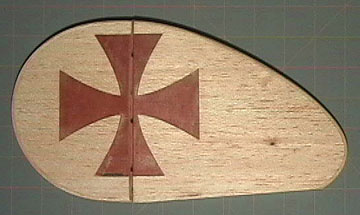About fiberglass base finishes
Mike James (NextCraft
composite guru) tells me that a fiberglass finish adds tremendous strength
to the finish by "unitizing" it.

A fiberglassed component
A common misconception regarding a painted fiberglass finish is
weight.
A painted finish using fiberglass as a base is not heavy if it is applied correctly.
The only
purpose of the resin is to adhere the cloth. There is no reason to
apply heavy coats of resin. Applying a light coat and sanding between
each coat of the
finish will keep the finish thin and light.
The reason painted finishes have gotten a bad reputation is because some
people slop on the resin and then apply a second coat. A light
sanding is followed with a thick coat or three of primer. These are lightly sanded,
Bondo is added and then thick
coats of paint are applied.
A finish such as this is heavy and the
paint is likely to chip, peel or crack under flight stress and ground
handling. More likely the plane will become a hangar queen because
it is overweight. The perpetrator of this finish will carry on the fine
tradition of claiming paint is heavy. His paint jobs are
heavy, but yours don't have to be.
If you begin with good construction then you shouldn't have to use much filler
if at all.
This article will not discuss priming and painting. It will teach you
to apply a good, lightweight fiberglass base. What I am presenting is
the traditional technique for applying glass cloth.
Caution! Do not apply fiberglass
in extremely humid weather. Water will end up in the resin and it may
never
cure properly.
Resin can be applied in cold weather, but it will take a long time to fully
cure. It is best if you can put the component someplace relatively warm
while it cures.
|
![]()